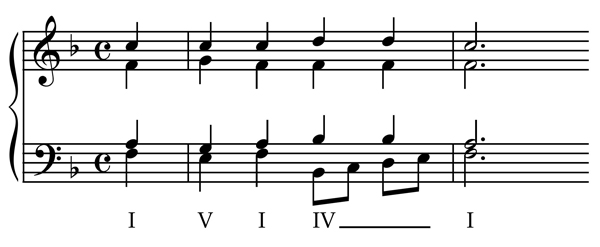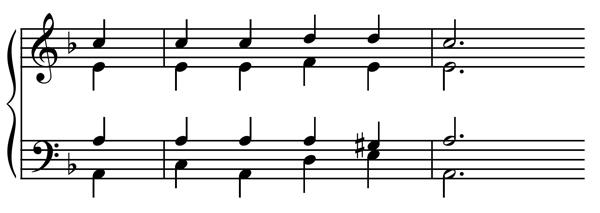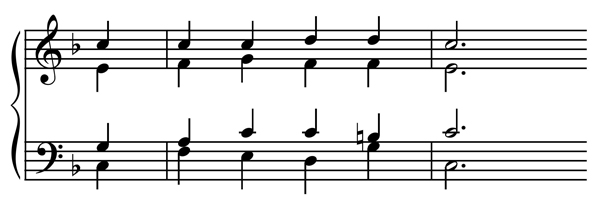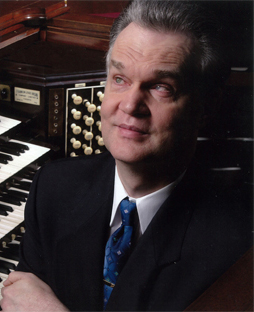Whether you are looking to fill a little time, transitioning from the choir anthem to the doxology, or creating a larger form, one of the hallmarks of a good improvisation is the virtually constant presence of thematic material. By using recognizable material, your improvisation becomes more coherent, more competent and more convincing, thus improving your skills in three of the four C’s of improvisation.
Cadences
One of the patterns I practiced when learning piano were standard I-IV-I-V-I cadential patterns. (If you need an explanation of Roman Numerals for music, there is a lesson available at www.8notes.com.) I learned to play these in every major and minor key in multiple inversions. These cadences are basic building blocks to have in your ears and fingers, especially if you are looking to establish a new key center. I had to play them for the key of every piano piece I learned. If you need to practice them, you could play them for the key of every hymn or piece you plan to play this Sunday.
Thanksgiving
At the end of November here in the United States, we will celebrate Thanksgiving. While the story of the Pilgrims and Indians sharing food together is likely more fiction than fact, the idea of giving thanks for all that we have is something we should probably practice more than once a year. One of the hymns closely associated with the holiday, Nun danket alle Gott, also happens to open with a harmonic progression that requires only I, IV, and V chords of the cadential patterns mentioned above.

Thematic material can be melodic, but it can also be harmonic. Try playing the first phrase of Nun danket followed by a similar I-V-I-IV-IV-I pattern in a closely related key (D minor, C major, Bb major, or G minor)? Congratulations! You just made a modulation with motive!
As this phrase ends with a plagal cadence, you’ll probably wish to continue playing in your new key or keep moving to another closely related key if you haven’t arrived at your destination yet.
Reharmonization
Another way to modulate while using ideas from a theme is to reharmonize the melody. Here’s the same opening phrase in A minor:
Same melody. New chords. And while C major might make it a little easier to get to G major, the reharmonization in A minor opens up the option of E major for us which would normally be considered a very distant key from our start in F major. How many other harmonizations can you find for this melody? Where will they free you to go?
Q and A
Often musical phrases are described as antecedent and consequent or question and answer. When making transitions, it is helpful to be able to answer the same question in many different ways. If the first four measures of Nun danket alle Gott is the question, can you find answers that get you to any other key at the end of four more measures? Which of the thematic material is most helpful when modulating to different keys? Can you keep the first three notes and chords the same before modulating? How does this exercise change when you use a different hymn tune as your theme?
I want thank those of you who have responded to my sign-up survey. It is helpful for me to know about my audience, and I was also alerted through the comments to two other improvisers that I’ll be adding to the website soon! Because the survey is anonymous, if you would like a response from me, please leave your contact info in the final response box or simply email me directly. If you are not yet a subscriber and would like to take the survey, please uses the boxes to the right to get your free lesson and a link for the survey.
Hoping your improvisations inspire people to thank you for your music!
Glenn
Recent additions to organimprovisation.com:
Organists:
Mode:
Theme:
Newsletter Issue 27 – 2014 11 3
See the complete list of past newsletter issues here.
Sign up to receive future issues using the box to the right on this page.



